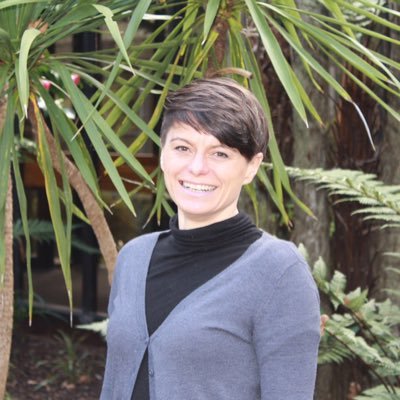Policy needs science like a fat tūī loves nectar
We "sat down" with Katrin Webb from DOC to talk about how policy uses the science provided to them, and how useful it is to have everyone at the table from the very beginning.

When you walk through a kauri dieback wash station, you might be thinking about doing the right thing to protect our ngahere (forest), or you might just be excited to get back into the bush.
What you probably won’t be wondering is why that wash station is located at that exact point, or what pattern the droplets of disinfectant are making on your footwear.
These planning and design decisions are a crucial part of the policy making process for government organisations, including Te Papa Atawhai – DOC (Department of Conservation). They need to know the answers and plan accordingly, preferably before people put their boots on or they get their wallets out.
DOC’s Principal Advisor for Science Investment Katrin Webb says for tracks in myrtle rust-infected forests, every little detail can make a difference. Are there plants already there that should be removed? Will removing them help? What should they be replaced with?

“Those little pieces of manipulation can have a huge impact.
“We need to know what we’re doing is affordable and isn’t causing more damage. To be sure it’s not causing more damage, we have to understand the exact effect it is having,” Katrin says.
Normally to achieve that understanding, scientists do the research, which is then peer reviewed and published. DOC then needs to put time and resources into deciphering and trialling the results.
Katrin says this can add several years to the decision making process – from the completion of the study to the implementation of the results. And that’s only if the recommendations are practically feasible.
“One way to speed up the process is for scientists to work with operations from the start. This enables us to be more in touch with what the research means for for those working in the field and for management. It means we can start planning the implementation during the study and scientists can continually test whether their proposed solutions can be practically applied.”
Early communication can make all the difference, but it’s rarely factored into traditional science projects.
Katrin says it can be challenging getting buy-in from delivery/operational teams to invest the people and resources needed into science projects.
“Implementing science better is a job for all of us, not just the science community.
“There needs to be greater recognition of the resources needed across an organisation to roll the science out, especially with social science.”
If delivery/operations can get involved with research earlier, we can reduce the time to implementation and therefore impact. It can also encourage people on the front line to think and be enthused about what might be possible.
What’s a novel design for the kauri dieback wash station? Is there new technology that can deliver trigene more effectively? Is there a type of shoe that naturally does not transmit soil?
The possibilities are endless, but only if we work together to imagine them.
Katrin started life as a scientist but she says her short attention span led her to find her niche as a manager, connector and translator. After 16 years at New Zealand CRIs (Crown Research Institutes) she has recently moved to DOC into her newly-created role.
The self-confessed extrovert loves feeling like she’s part of the change for good, and enjoys having her worldviews challenged on a daily basis.
Posted April 2020